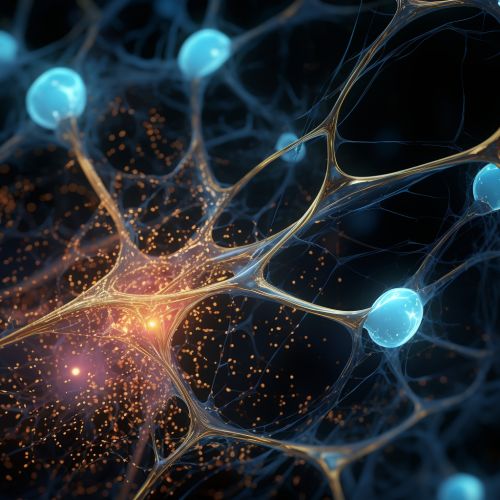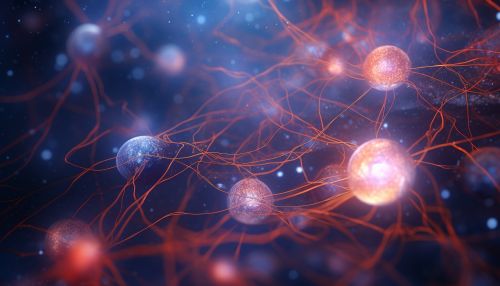Ganglion
Anatomy and Structure
A ganglion is a structure containing a number of nerve cell bodies, typically linked by synapses, and often forming a swelling on a nerve fiber. They are found throughout the body, but particularly in the peripheral nervous system, where they act as relay points for neural signals. Ganglia provide relay points and intermediary connections between different neurological structures in the body, such as the peripheral and central nervous systems.


Ganglia are primarily made up of somata (cell bodies) of neurons, glial cells, and are often encapsulated in a thin layer of connective tissue. The neurons found in ganglia are known as ganglion cells. These cells can be categorized based on their function into sensory, motor, and interneurons.
Sensory Ganglia
Sensory ganglia, also known as dorsal root ganglia, contain the cell bodies of sensory neurons. These neurons are responsible for transmitting sensory data from receptors to the spinal cord. This data includes information about temperature, pressure, pain, and other sensory stimuli.
Motor Ganglia
Motor ganglia contain the cell bodies of motor neurons, which are responsible for transmitting signals from the brain and spinal cord to effectors such as muscles and glands. These signals result in physical actions such as muscle contraction or gland secretion.
Autonomic Ganglia
Autonomic ganglia are clusters of nerve cell bodies in the autonomic nervous system, the part of the nervous system that controls involuntary actions like heart rate and digestion. They are further divided into sympathetic and parasympathetic ganglia.
Sympathetic Ganglia
Sympathetic ganglia are involved in the body's fight-or-flight response. They prepare the body for action by increasing heart rate, dilating the pupils, and slowing digestion, among other things.
Parasympathetic Ganglia
Parasympathetic ganglia, on the other hand, are involved in rest-and-digest activities. They slow the heart rate, constrict the pupils, and stimulate digestion.
Ganglion Cysts
A ganglion cyst is a noncancerous lump, often on the tendons or joints of wrists and hands. They can also appear on the feet. These cysts are filled with a jellylike substance and can cause pain and discomfort, especially if they press against a nerve.
